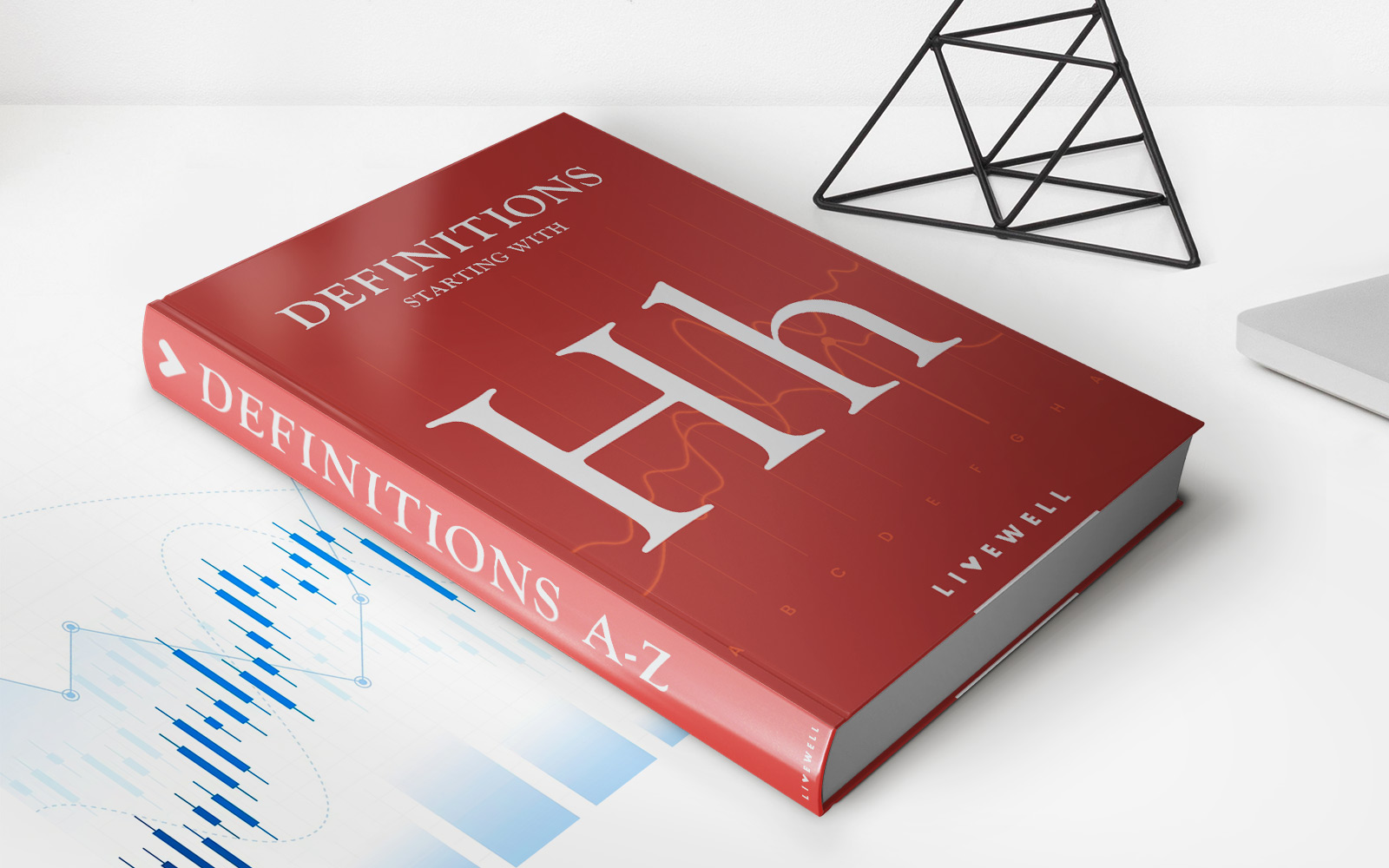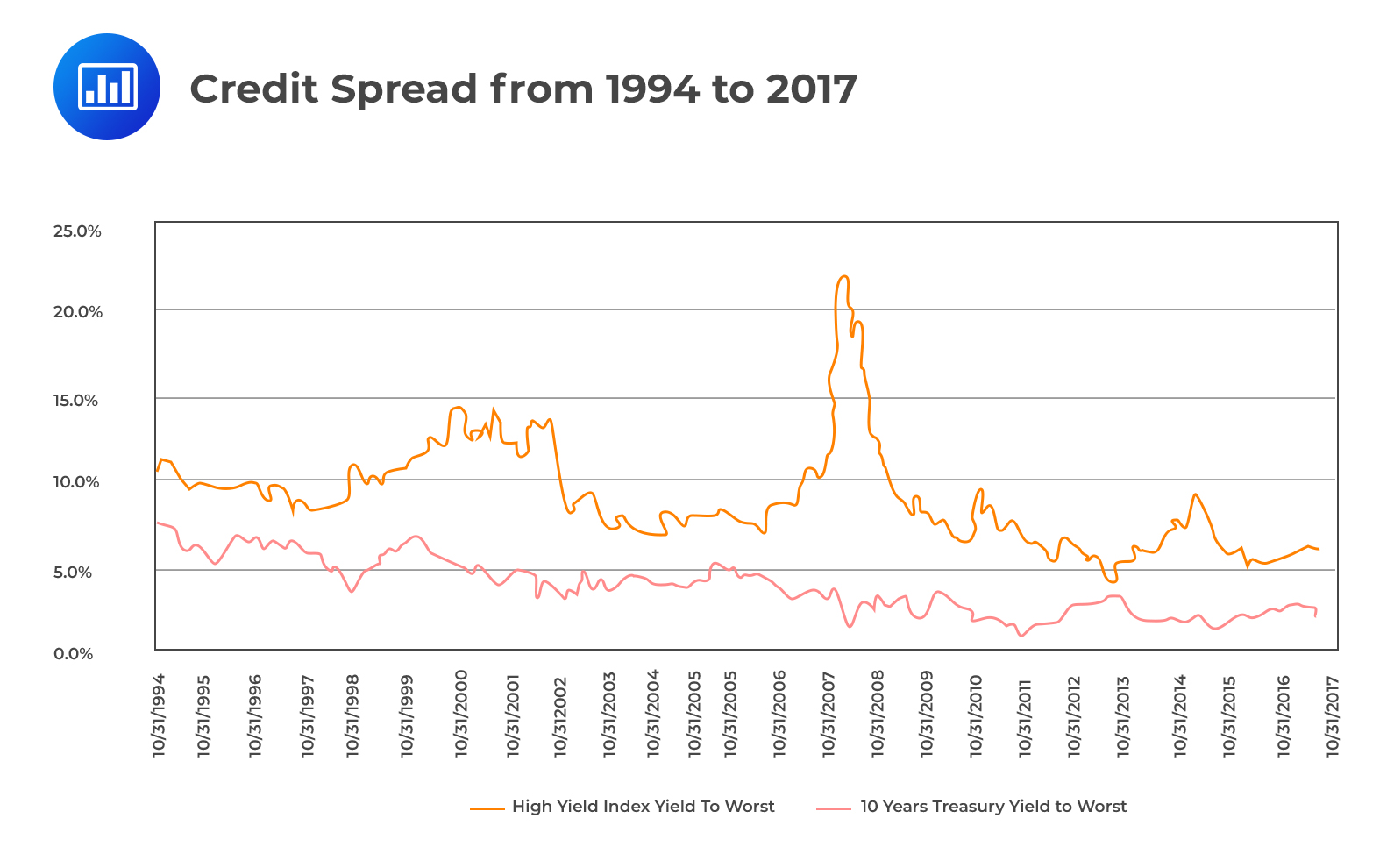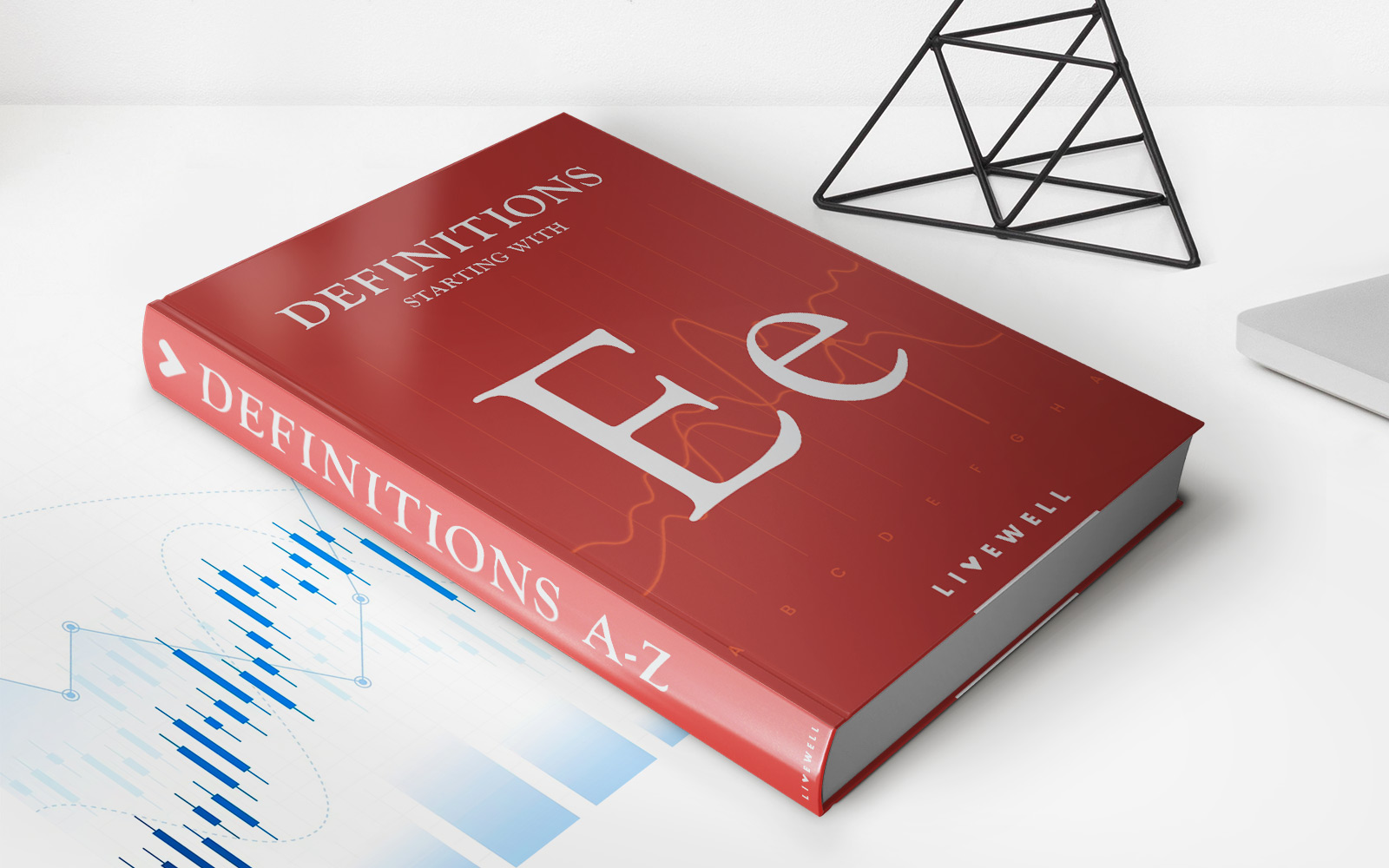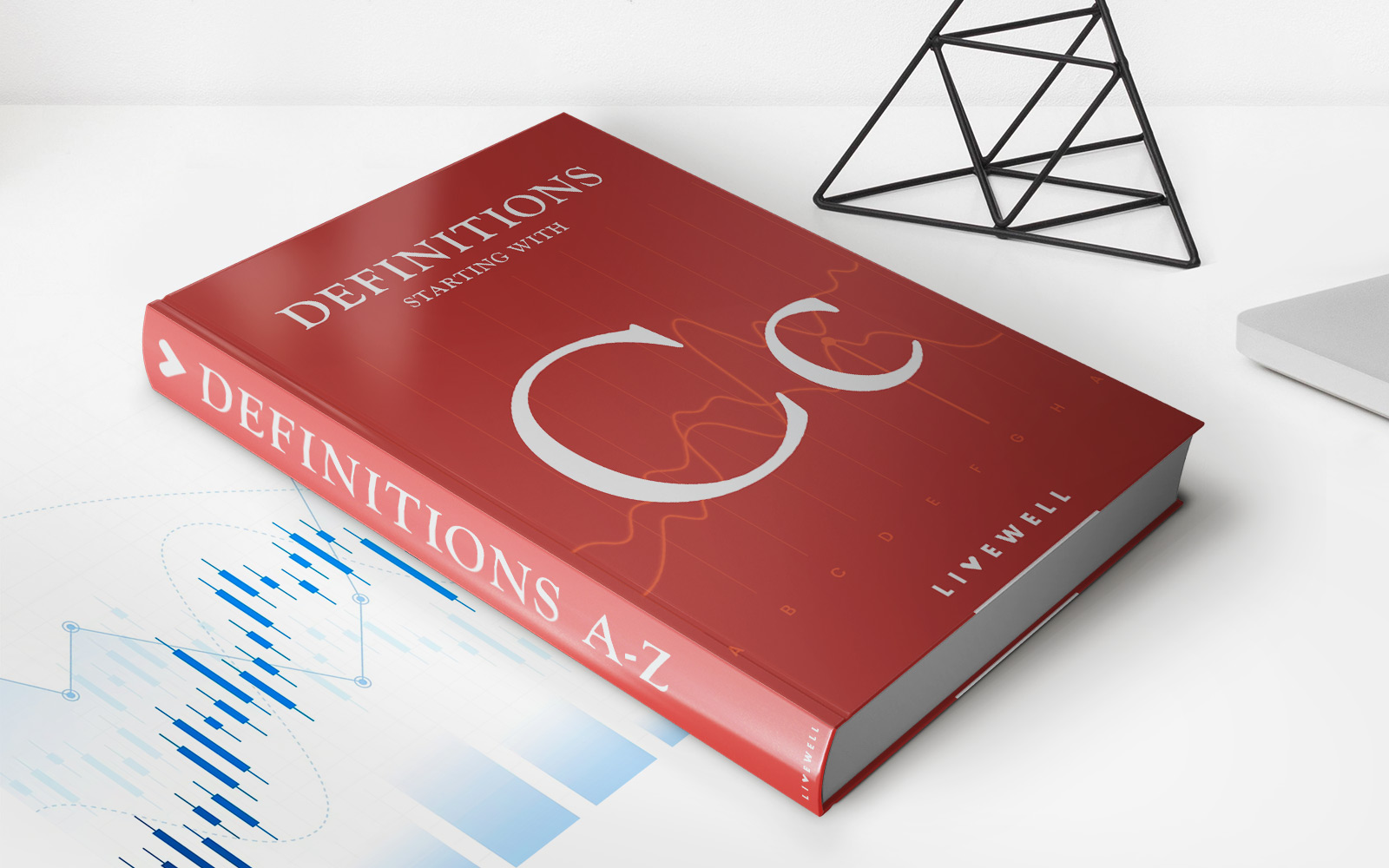

Finance
What Is The Hope Credit
Modified: February 21, 2024
Learn more about the Hope Credit, a financial opportunity that can give you hope for a brighter future. Understand its benefits and eligibility requirements in the world of finance.
(Many of the links in this article redirect to a specific reviewed product. Your purchase of these products through affiliate links helps to generate commission for LiveWell, at no extra cost. Learn more)
Table of Contents
Introduction
The Hope Credit is a tax credit available to eligible taxpayers who pay qualified education expenses for themselves, their spouse, or their dependents. It was designed to assist individuals and families in offsetting the costs of higher education. By taking advantage of the Hope Credit, taxpayers can reduce their tax liability and potentially receive a refund.
Higher education can be a significant financial burden for many individuals and families. Tuition fees, books, and other expenses can add up quickly, making it challenging for some to pursue a college or university education. The Hope Credit aims to alleviate some of these financial challenges by providing a tax break specifically for educational expenses.
While overall educational expenses can still be high, the Hope Credit offers a valuable opportunity for taxpayers to receive some financial relief. It is important to understand the eligibility requirements, maximum credit amount, qualified expenses, and how to claim the credit in order to take full advantage of its benefits.
In this article, we will provide a comprehensive overview of the Hope Credit, outlining its eligibility criteria, maximum credit amount, qualified expenses, how to calculate the credit, and the process for claiming it on your tax return. We will also compare the Hope Credit to other education tax credits to help you make an informed decision when it comes to reducing the financial burden of higher education.
Whether you are a student or a parent funding your child’s education, understanding the Hope Credit can help you make more informed financial decisions and potentially save money on your taxes. So, let’s dive in and explore the details of this valuable tax credit.
Overview of the Hope Credit
The Hope Credit, also known as the American Opportunity Credit, is a tax credit offered by the Internal Revenue Service (IRS) to promote and support higher education. It was enacted as part of the American Recovery and Reinvestment Act of 2009 and has since provided significant financial assistance to students and families.
The Hope Credit allows eligible taxpayers to claim a credit for qualified education expenses paid for themselves, their spouse, or their dependents. These expenses include tuition, fees, and required course materials such as books and supplies. This credit can be claimed for the first four years of post-secondary education, and it is available for both full-time and part-time students.
One of the key features of the Hope Credit is its generous maximum credit amount. As of 2021, taxpayers can claim a credit of up to $2,500 per eligible student per year. This means that if you have multiple students in your household, such as siblings attending college, you can potentially claim the credit for each of them, resulting in even greater tax savings.
It is important to note that the Hope Credit is a non-refundable credit, which means that it can only be used to reduce your tax liability to zero. However, if the credit exceeds your tax liability, you may be eligible for a refund of up to 40% of the remaining credit amount, known as the Additional Child Tax Credit.
To qualify for the Hope Credit, taxpayers must meet certain eligibility requirements. These include the student being enrolled in a degree or certificate program, meeting the criteria of a qualified educational institution, and the taxpayer’s modified adjusted gross income falling within specified limits. We will discuss these requirements in more detail in the next section.
The Hope Credit provides a valuable opportunity for students and families to offset the costs of higher education and reduce their tax burden. By understanding the eligibility criteria, claiming process, and limitations of the credit, taxpayers can make informed decisions and ensure they receive the maximum applicable credit.
Now that we have an overview of the Hope Credit, let’s dive into the specific eligibility requirements that must be met in order to claim the credit.
Eligibility Requirements
In order to qualify for the Hope Credit, taxpayers and students must meet certain criteria set forth by the IRS. These eligibility requirements include:
- The student must be pursuing a degree or certificate program. The Hope Credit can be claimed for expenses related to undergraduate education.
- The student must be enrolled at least half-time in a qualified educational institution. This can include colleges, universities, vocational schools, and other post-secondary institutions that are eligible to participate in federal student aid programs.
- The educational expenses must be paid for the taxpayer, their spouse, or a dependent listed on their tax return. This means that taxpayers can claim the Hope Credit for their own educational expenses, as well as for their children or other dependents.
- The taxpayer’s modified adjusted gross income (MAGI) must fall within certain limits. For the 2021 tax year, the MAGI phase-out range is $80,000 to $90,000 for single filers and $160,000 to $180,000 for married couples filing jointly. If the taxpayer’s MAGI exceeds these limits, they may be ineligible to claim the Hope Credit.
It is important to note that if a taxpayer or student qualifies for the Lifetime Learning Credit for the same tax year, they cannot claim both the Hope Credit and the Lifetime Learning Credit for the same student in the same year. Therefore, taxpayers should carefully consider which credit is more advantageous based on their individual circumstances.
Additionally, if a student has been convicted of a felony drug offense, they may be ineligible to claim the Hope Credit. However, there are certain exceptions and special rules that apply in these cases, so it is best to consult the IRS guidelines or a tax professional for more detailed information.
When claiming the Hope Credit, it is important to keep accurate records and supporting documentation. This includes receipts, invoices, and other documentation that verifies payments made for qualified education expenses. Taxpayers should retain these records for at least three years in case of an IRS audit or verification.
Now that we have covered the eligibility requirements for the Hope Credit, let’s move on to the next section, which explores the maximum credit amount that taxpayers can claim.
Maximum Credit Amount
The maximum amount of the Hope Credit that a taxpayer can claim is $2,500 per eligible student per year. This means that if you have multiple students in your household who meet the eligibility requirements, you can claim the credit for each of them, potentially maximizing your tax savings.
It is important to note that the $2,500 credit amount is based on qualified education expenses paid for the student during the tax year. This includes tuition fees, required course materials such as textbooks and supplies, but excludes expenses such as room and board, transportation, and non-required equipment.
The nice thing about the Hope Credit is that it is a per-student credit, meaning that you can claim it for each student in your household who meets the eligibility requirements. For example, if you have two children enrolled in eligible educational institutions, you may be able to claim two separate $2,500 credits, totaling $5,000 in tax savings.
However, it is important to remember that the credit is non-refundable. This means that it can only be used to reduce your tax liability to zero. If your tax liability is less than $2,500 per student, you may not be able to claim the full credit amount.
Furthermore, the maximum credit amount is gradually reduced for taxpayers whose modified adjusted gross income (MAGI) falls within certain income ranges. For the 2021 tax year, the phase-out range for single filers is $80,000 to $90,000, and for married couples filing jointly, it is $160,000 to $180,000. If your MAGI exceeds the upper limit of the phase-out range, you may not be eligible for the full $2,500 credit amount.
It’s essential to review your income and tax situation to determine the maximum credit amount for which you may qualify. Consider consulting with a tax professional or utilizing tax software to accurately calculate and optimize your Hope Credit.
Now that we have covered the maximum credit amount, let’s move on to the next section, which discusses the qualified expenses that are eligible for the Hope Credit.
Qualified Expenses
The Hope Credit allows taxpayers to claim a credit for certain qualified education expenses paid for themselves, their spouse, or their dependents. It is important to understand what expenses qualify for the credit to ensure you maximize your tax savings.
Qualified expenses for the Hope Credit include:
- Tuition fees: The amount paid for academic instruction at an eligible educational institution. This includes tuition fees charged by the institution, but not fees for room and board or other personal expenses.
- Required course materials: Expenses for books, supplies, and equipment that are required for enrollment or attendance at the educational institution. This can include textbooks, lab supplies, and specialized equipment necessary for coursework.
It is important to note that expenses for room and board, transportation, and non-required equipment are not considered qualified expenses for the Hope Credit. These costs are generally not eligible for the credit, even if they are related to education.
Additionally, only expenses paid for higher education are eligible for the Hope Credit. This includes expenses for undergraduate education such as college and university courses leading to a degree or certificate.
It is important to keep accurate records of your qualified education expenses, including receipts, invoices, and other documentation, in case of IRS verification or audit. These records will help support your claim for the Hope Credit and ensure that you receive the maximum credit amount.
Now that we have covered the qualified expenses for the Hope Credit, let’s move on to the next section, which explores how to calculate the credit.
Calculating the Credit
To calculate the Hope Credit, you will need to determine the amount of qualified education expenses paid during the tax year for an eligible student. The credit is based on a percentage of these expenses, up to a maximum of $2,500 per student per year.
The Hope Credit is calculated as 100% of the first $2,000 of qualified education expenses paid for the student, plus 25% of the next $2,000 of qualified education expenses. This results in a maximum credit of $2,500 per eligible student.
Let’s look at an example to better understand how to calculate the credit:
If you paid $4,000 in qualified education expenses for an eligible student, the calculation would be as follows:
- 100% of the first $2,000 = $2,000
- 25% of the next $2,000 = $500
- Total credit amount = $2,000 + $500 = $2,500
In this example, you would be eligible for the maximum Hope Credit of $2,500 for the tax year.
It is important to note that the credit is non-refundable, which means it cannot exceed your tax liability. If your tax liability is less than the calculated credit amount, you can only claim the amount needed to reduce your tax liability to zero.
For example, if your calculated Hope Credit is $2,500, but your tax liability is only $1,800, you would only be able to claim a credit of $1,800. The remaining $700 of the credit would not be refundable and cannot be carried forward to future tax years.
When preparing your tax return, you will need to use IRS Form 8863, Education Credits, to claim the Hope Credit. This form will guide you through the calculation and help ensure that you claim the correct credit amount.
Now that we have covered how to calculate the credit, let’s move on to the next section, which covers the process for claiming the Hope Credit on your tax return.
Claiming the Hope Credit
Claiming the Hope Credit on your tax return requires careful attention to detail and accurate reporting of qualified education expenses. Here are the steps to follow when claiming the Hope Credit:
- Ensure eligibility: Confirm that you meet all the eligibility requirements for the Hope Credit, including enrollment in a qualified educational institution, pursuit of an undergraduate degree or certificate, and meeting the income limits.
- Gather documentation: Collect all relevant documentation, including receipts, invoices, and records of qualified education expenses paid for the eligible student during the tax year. These documents will serve as evidence to support your claim.
- Complete IRS Form 8863: Fill out Form 8863, Education Credits, which is specifically designed for claiming education tax credits. Follow the instructions provided on the form to accurately calculate and report the Hope Credit amount.
- Include Form 8863 with your tax return: Attach Form 8863 to your tax return when filing with the IRS. Be sure to review your tax return for accuracy and completeness before submitting it.
- Keep records: Retain copies of your tax return and all supporting documents for at least three years in case of IRS verification or audit. These records will serve as proof of your claim in the event of any inquiries.
It is important to file your tax return accurately and on time to claim the Hope Credit. Missing the tax filing deadline could result in penalties and potentially disqualification from claiming the credit.
Additionally, it is worth noting that you cannot claim the Hope Credit using the IRS Free File program. If you are using tax software or a tax professional to prepare your return, ensure that they are aware of your intention to claim the Hope Credit so that it is calculated correctly.
Now that we have discussed the process for claiming the Hope Credit, let’s move on to the next section, which explores the limitations and restrictions that apply to this tax credit.
Limitations and Restrictions
While the Hope Credit can provide valuable financial assistance for higher education expenses, there are certain limitations and restrictions to be aware of. Understanding these limitations will help you make informed decisions and accurately claim the credit on your tax return.
Here are some important limitations and restrictions to consider:
- Time restrictions: The Hope Credit can only be claimed for the first four years of post-secondary education. Once a student exceeds four years of education, they are no longer eligible for the credit.
- Non-refundable credit: The Hope Credit is a non-refundable credit, meaning that it can only be used to offset your tax liability. If the credit exceeds your tax liability, you may not receive a refund for the difference.
- Income phase-out range: The maximum credit amount is gradually phased-out for taxpayers with a modified adjusted gross income (MAGI) within certain income ranges. If your MAGI exceeds the upper limit of the phase-out range, you may not be eligible for the full $2,500 credit.
- Cannot claim with other education credits: You cannot claim the Hope Credit in the same tax year for the same student if you are also claiming the Lifetime Learning Credit or the Tuition and Fees Deduction. However, you can choose which credit to claim if you are eligible for multiple education tax benefits.
- Expenses paid with tax-free funds: You cannot claim the Hope Credit for education expenses paid with tax-free funds such as scholarships, grants, employer-provided educational assistance, or funds from a qualified tuition program (529 plan) or Coverdell Education Savings Account (ESA).
It is important to carefully review the IRS guidelines and consult with a tax professional to ensure that you meet all the requirements and understand the limitations of the Hope Credit. Taking these factors into account will help you maximize your eligible tax savings and avoid potential issues with the IRS.
Now that we have covered the limitations and restrictions of the Hope Credit, let’s move on to the next section, which compares the Hope Credit to other education tax credits.
Comparison to Other Education Tax Credits
When it comes to education tax benefits, the Hope Credit is not the only option available. There are other education tax credits that taxpayers can consider. Here, we compare the Hope Credit to two other popular education tax credits: the Lifetime Learning Credit and the Tuition and Fees Deduction.
Lifetime Learning Credit: The Lifetime Learning Credit is another education tax credit that taxpayers can claim for qualified education expenses. Unlike the Hope Credit, there is no limit on the number of years it can be claimed. The credit is equal to 20% of up to $10,000 of qualified education expenses, with a maximum credit of $2,000 per tax return. Unlike the Hope Credit, the Lifetime Learning Credit is available for both undergraduate and graduate education, as well as for courses taken to acquire or improve job skills. However, the income phase-out range for the Lifetime Learning Credit is lower compared to the Hope Credit, making it less beneficial for taxpayers with higher incomes.
Tuition and Fees Deduction: The Tuition and Fees Deduction allows taxpayers to deduct up to $4,000 in qualified education expenses from their taxable income. This deduction is available for both undergraduate and graduate education expenses, and there is no limit on the number of years it can be claimed. However, it is important to note that the deduction is an “above-the-line” deduction, meaning that it is available even if the taxpayer does not itemize their deductions. The income phase-out range for the Tuition and Fees Deduction is higher than the phase-out range for the Hope Credit, making it potentially more beneficial for higher-income taxpayers who do not qualify for the Hope Credit or the Lifetime Learning Credit.
When considering which education tax benefit to claim, taxpayers should evaluate their individual circumstances, including the type of education expenses, income level, and eligibility requirements. Consulting with a tax professional can help determine the most advantageous option and ensure accurate reporting.
Now that we have compared the Hope Credit to other education tax credits, let’s conclude this article.
Conclusion
The Hope Credit is a valuable tax credit that provides financial relief for individuals and families facing the costs of higher education. By understanding the eligibility requirements, maximum credit amount, qualified expenses, and claiming process, taxpayers can take full advantage of this credit and reduce their tax burden.
Throughout this article, we have explored the key aspects of the Hope Credit, including its purpose, eligibility requirements, maximum credit amount, qualified expenses, and how to calculate and claim the credit. We have also discussed the limitations and restrictions that apply to the credit and compared it to other education tax credits.
It is important for individuals and families to consider their own circumstances and evaluate the various education tax benefits available to them. Depending on factors such as income, type of education expenses, and eligibility requirements, taxpayers may find that the Hope Credit is the most advantageous option or that another credit or deduction better suits their needs.
To make the most of the Hope Credit, it is crucial to keep accurate records of qualified education expenses and seek guidance from tax professionals if needed. By doing so, taxpayers can ensure that they claim the maximum credit amount that they are eligible for and potentially reduce their tax liability or receive a refund.
Higher education can be a significant financial investment, but with the Hope Credit, individuals and families can find some relief and support in their pursuit of knowledge and career advancement. By utilizing the Hope Credit and other available education tax benefits, taxpayers can alleviate the burden of educational expenses and focus more on their academic and professional growth.
Remember to stay updated on the latest IRS guidelines regarding the Hope Credit, as tax laws and regulations may change over time. By staying informed and proactive, you can make informed financial decisions and take advantage of the tax benefits available to you or your family members pursuing higher education.
Education is a valuable asset and a pathway to a brighter future. Through the Hope Credit, taxpayers can ease the financial burden of education and pave the way for personal and professional success.
Now that you have a comprehensive understanding of the Hope Credit, you are well-equipped to navigate the tax landscape and make informed decisions regarding education expenses. Whether you are a student or a parent funding your child’s education, the Hope Credit can provide significant financial relief and contribute to a positive educational journey.














